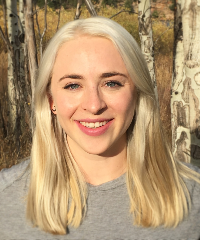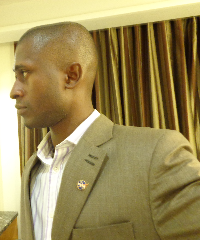Community Blogs
Community Blogs
Discover how the GLOBE community is engaging in all things GLOBE through the community blog posts below.
Learn how to create a GLOBE community blog post.
Filter By:
Blogs List
The journal Scientific American just published a blog about GLOBE. The post, titled " The GLOBE Program: Making the Case for K–12 Citizen Scientists " discusses several aspects of GLOBE, including our contributions and campaigns. As well, it helps explain our mission of providing the resources for students across the world to become citizen scientists.
"Contributing to global datasets not only gives students a chance to collect data that scientists can actually use, but allows them to compare their experiences and findings with other students around the world."
To read more ...
Read More »
Posted in:
Event Topics:
CAMPAIGNS AND PROJECTS (IOPS, ETC)
OTHER
Field Campaigns:
EL NIÑO
SURFACE TEMPERATURE
GLOBE Science Topics:
SCIENTIST SKILLS
GLOBE PROTOCOLS
BACKYARD SCIENCE
Primary Audience:
TRAINERS
TEACHERS
STUDENTS
PARTNERS
SCIENTISTS
ALUMNI
COUNTRY COORDINATORS
From the start, the measurement of daily maximum and minimum air temperature within one hour of local solar noon has been a key GLOBE protocol. The low cost approach was to use a U-tube thermometer housed in a wooden instrument shelter facing away from the equator. The U-shaped tube contained mercury with pins on either side of the mercury. As the air temperature warmed the pin on one side would move while the other pin stayed in place; when the air cooled, the pin on the other side would be pushed up. The pins were held in place by magnetized strips behind the thermometer tube so that ...
Posted in:
Curriculum:
STEM
TECHNOLOGY
GLOBE Science Topics:
EARTH AS A SYSTEM
EARTH SYSTEM SCIENCE
GLOBE PROTOCOLS
CLIMATE CHANGE
CLIMATE
GLOBE Working Groups:
SCIENCE WORKING GROUP
Investigation Areas:
ATMOSPHERE
Primary Audience:
TEACHERS
TRAINERS
STUDENTS
PARTNERS
SCIENTISTS
ALUMNI
COUNTRY COORDINATORS
I recently had the pleasure of meeting a GLOBE student named Aspen. I was excited because my favorite type of tree is Aspen (Quaking Aspen to be more specific, Populus tremuloides to be even more specific), and I was able to tell her some of the fun facts about her namesake.
My favorite thing about aspens is their bark. The white powder on it can act as sunscreen. It’s only about an SPF of 5 but it’s still pretty cool. The bark also contains chloroplasts which means it can photosynthesize, making it one of the few deciduous trees that do not solely rely on leaves for ...
Posted in:
Investigation Areas:
BIOSPHERE
Primary Audience:
TRAINERS
TEACHERS
STUDENTS
PARTNERS
SCIENTISTS
ALUMNI
COUNTRY COORDINATORS
As Earth science has a single uncontrolled object of study, the first rule is to take today’s data today. While ice and sediment cores and fossils can reveal past conditions, the observations that can be made right now cannot be replaced by ones taken later. This goes well with the Native American adage, “You can’t step in the same river twice.” The environment is constantly changing and doing so on a wide range of time and space scales.
In a recent video post, Neil deGrasse Tyson said,
“One of the great things about science is that it is an entire exercise finding what is true. You ...
Posted in:
Curriculum:
SCIENCE AND MATH
Event Topics:
CAMPAIGNS AND PROJECTS (IOPS, ETC)
GLOBE LEARNING EXPEDITIONS
SCIENCE SYMPOSIA AND FAIRS
Field Campaigns:
EL NIÑO
SMAP
GLOBE Science Topics:
EARTH AS A SYSTEM
EARTH SYSTEM SCIENCE
GENERAL SCIENCE
CLIMATE CHANGE
CLIMATE
Investigation Areas:
EARTH AS A SYSTEM
Primary Audience:
TEACHERS
STUDENTS
ALUMNI
Consider the rain gauge used in GLOBE, CoCoRaHS, and other citizen science programs. Just four pieces plus 2 mounting screws – an inner graduated cylinder, an outer cylinder, a cap/funnel, and a mounting bracket. The area of the outer tube is exactly 10 times the areas of the inner tube and the cap/funnel, so the graduations on the inner cylinder can be spaced ten times further apart. Thus, 0.2 mm of rain fills the inner tube to a depth of 2.0 mm, which one can read.
In addition, if heavy rainfall fills the inner cylinder, the rest of the rainfall overflows into the outer cylinder, ...
Posted in:
Curriculum:
STEM
Field Campaigns:
EL NIÑO
GPM
GLOBE Science Topics:
BACKYARD SCIENCE
GLOBE PROTOCOLS
Investigation Areas:
ATMOSPHERE
Primary Audience:
TEACHERS
STUDENTS
ALUMNI
This time was my first visit to Trinidad and Tobago and to the LAC region. The visit was first of its kinds, knowing vividly that Africans and the People of Trinidad and Tobago have so many things in common in terms of Geography and Historical antecedent. The motivation for my visit to Trinidad and Tobago started during the 17 th GLOBE Annual meeting at Maryland. Initially, it was just a brief discussion with Henry Saunders (Country Coordinator, GLOBE Trinidad and Tobago). However, after a year, I met Mr. Michael at GLOBE Expedition in New Delhi, India where we had in-depth ...
Posted in:
GLOBE Science Topics:
MEETINGS/CONFERENCES
GLOBE Working Groups:
SCIENCE WORKING GROUP
Investigation Areas:
PEDOSPHERE (SOIL)
Primary Audience:
TEACHERS
STUDENTS
SCIENTISTS
ALUMNI
COUNTRY COORDINATORS








